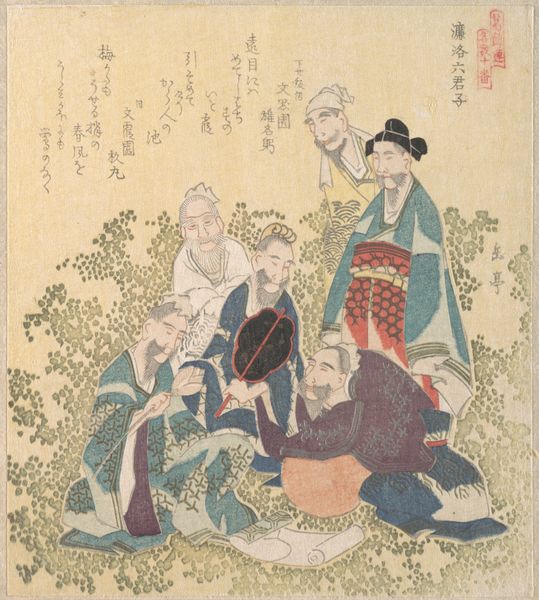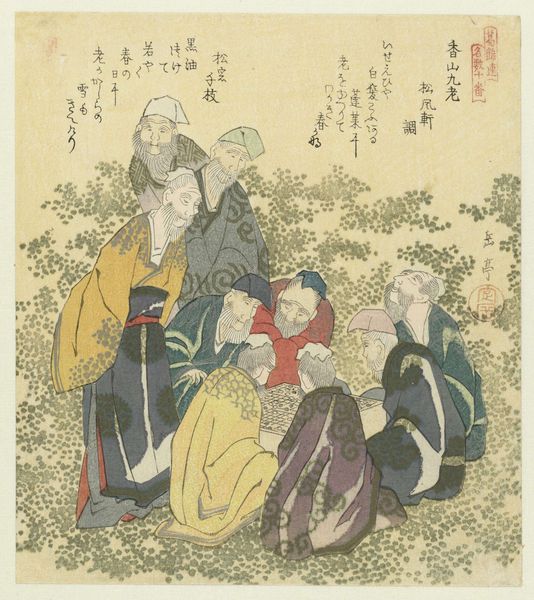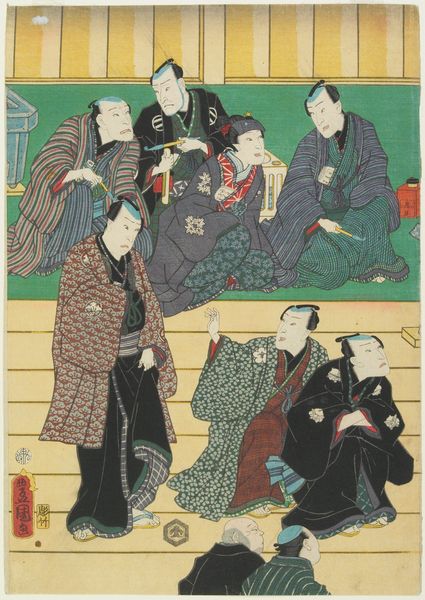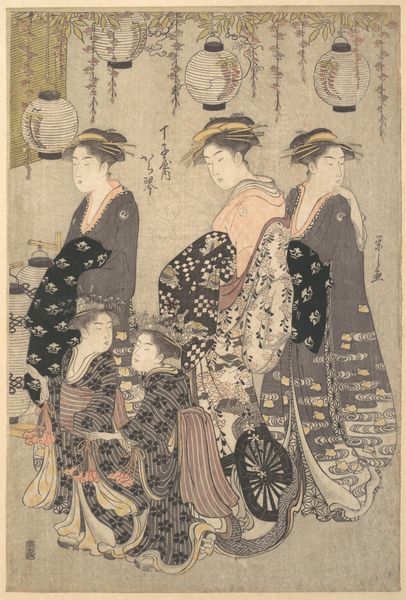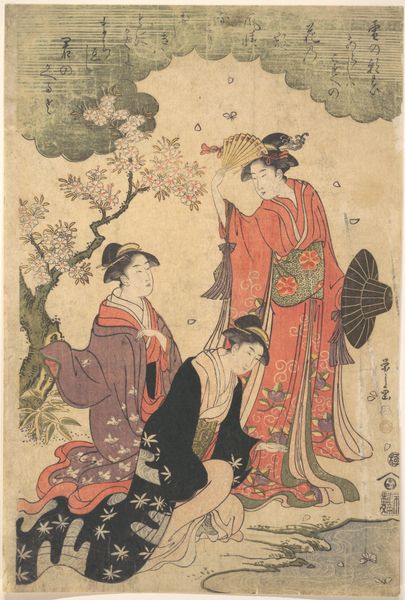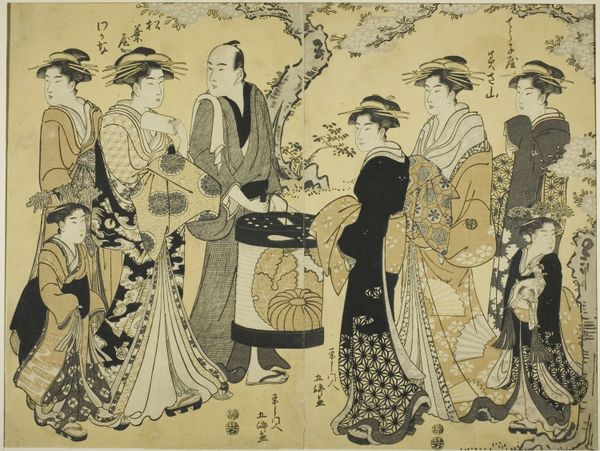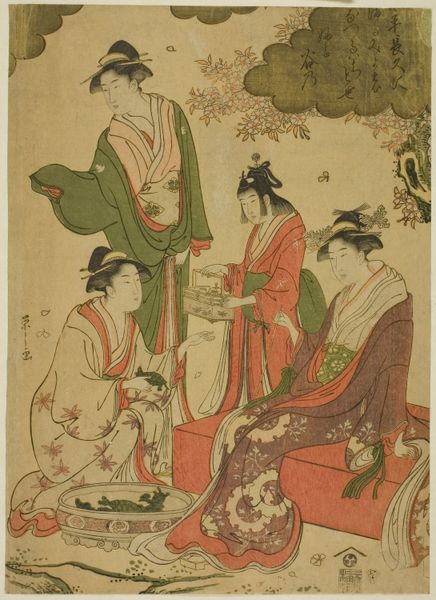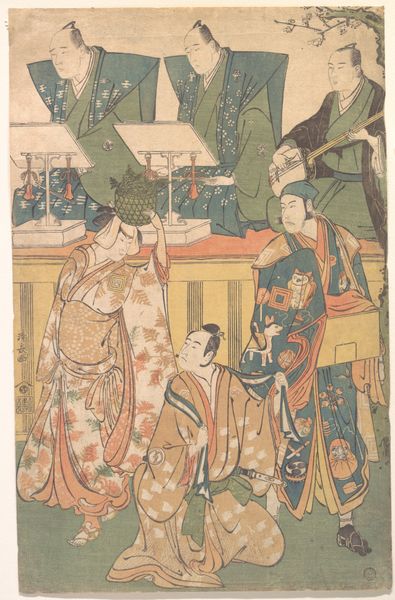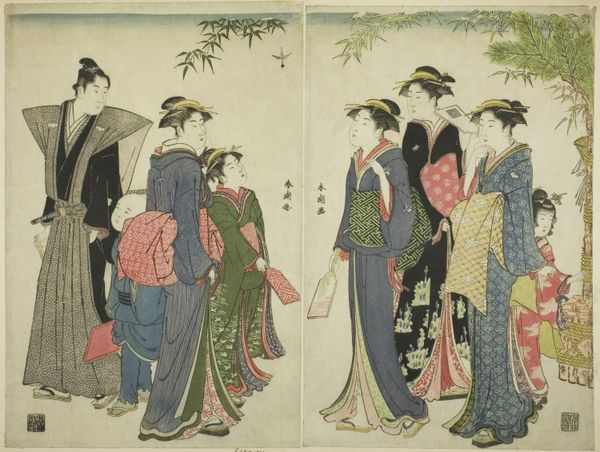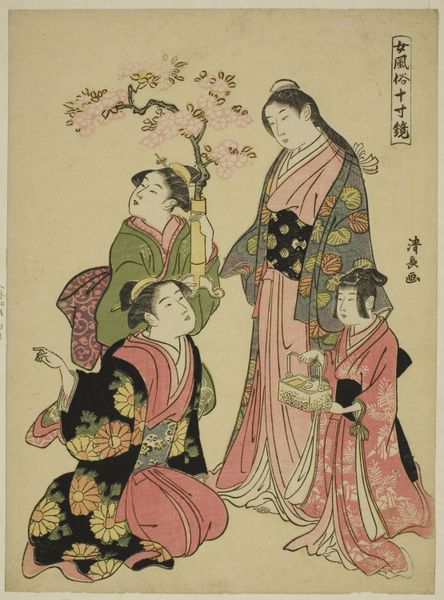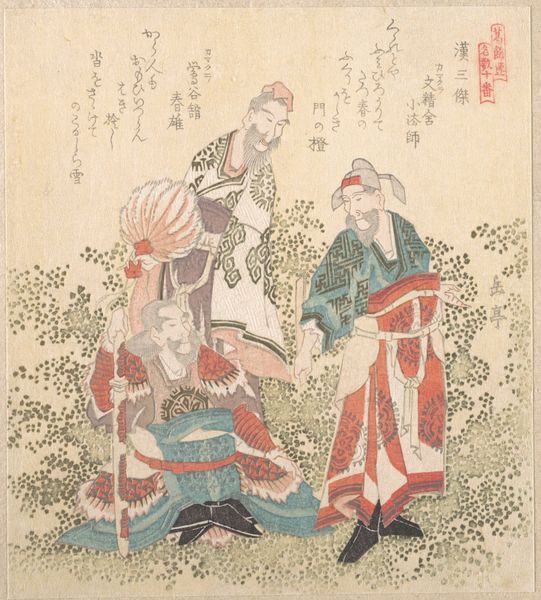
The Ten Great Disciples of Confucius (Komon jittetsu), from the series "A Set of Ten Famous Numbers for the Katsushika Circle (Katsushikaren meisu juban)" c. 1828
0:00
0:00
print, woodblock-print
#
portrait
# print
#
asian-art
#
ukiyo-e
#
figuration
#
woodblock-print
#
line
#
history-painting
Dimensions: 21.8 × 19.3 cm
Copyright: Public Domain
Editor: We're looking at "The Ten Great Disciples of Confucius," a woodblock print from around 1828 by Yashima Gakutei. It feels so densely packed with figures and detail, almost like a meticulously arranged puzzle. What do you see as its most compelling element? Curator: The most striking feature is certainly the composition itself. Note how the artist uses a cluster of figures to create a pyramidal structure. This directs the viewer's eye, while also presenting a complex interplay of line and form. What effect does the flatness of the picture plane achieve? Editor: It gives it a sort of stylized, almost symbolic feel, doesn’t it? Less about realistic representation and more about...arrangement? Curator: Precisely. The use of line, particularly in delineating the figures' robes and facial features, is incredibly deliberate. Gakutei focuses on clean, elegant lines to define form and to express texture through these. Consider, too, how the color palette reinforces this impression. Editor: You mean the limited range of colors? It does make you focus on the shapes and lines even more. It seems almost graphic in a way, but also refined because of the gentle colors. Curator: The color selection highlights the essence of each form. It reinforces the emphasis on two-dimensionality. Do you think that a greater use of modeling and shading would alter the artwork's impact? Editor: Absolutely. It would pull it away from being about pure form and line and into more realism, probably detracting from the patterns the print makes. Curator: Agreed. Through a focused manipulation of form, line and colour, this print delivers a fascinating study of visual composition. Editor: I see the image so differently now. Thank you. Curator: My pleasure. Considering such features enhances appreciation.
Comments
No comments
Be the first to comment and join the conversation on the ultimate creative platform.
